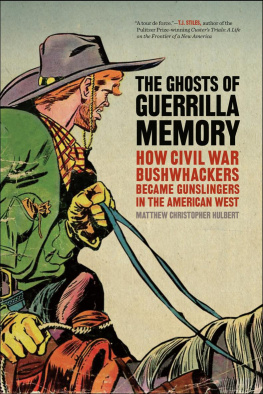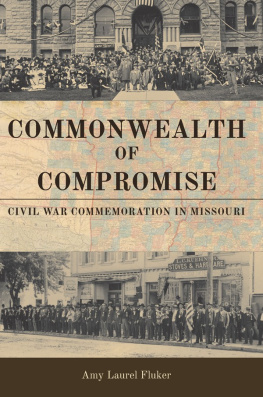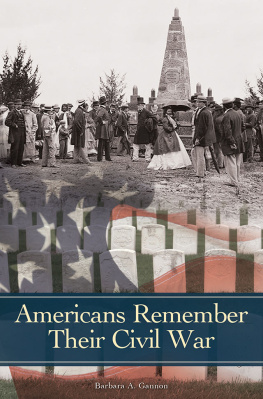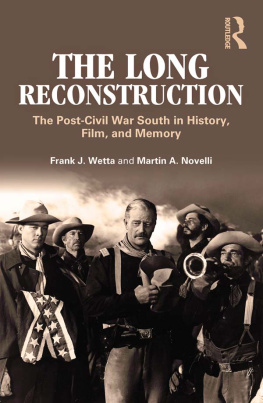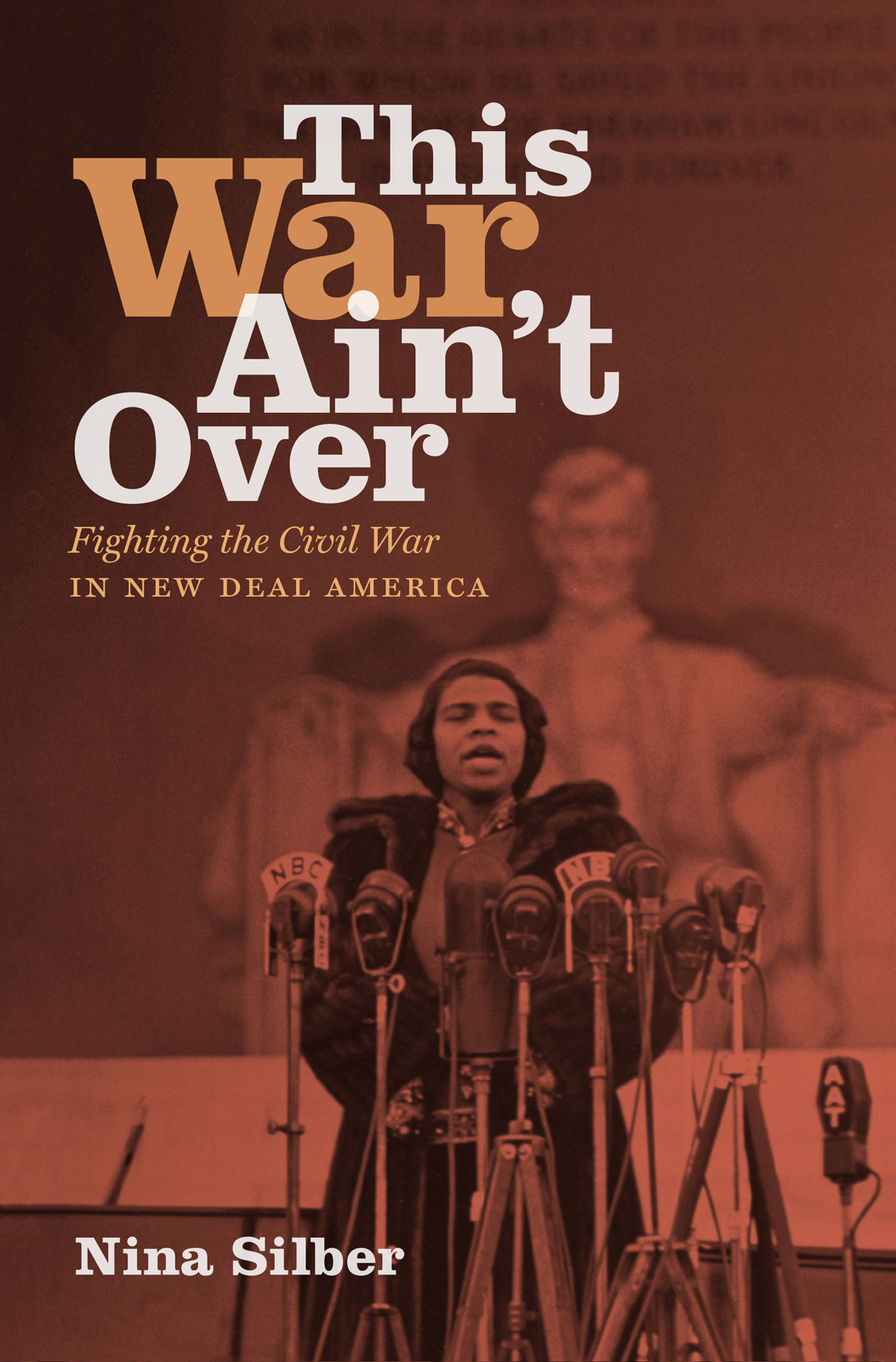THIS WAR AINT OVER
FIGHTING THE CIVIL WAR IN NEW DEAL AMERICA
Nina Silber
THE UNIVERSITY OF NORTH CAROLINA PRESS
CHAPEL HILL
2018 The University of North Carolina Press
All rights reserved
Manufactured in the United States of America
Designed by April Leidig
Set in Arno by Copperline Book Services, Inc.
The University of North Carolina Press has been a member of the Green Press Initiative since 2003.
Cover illustration: Singer Marian Anderson performing at the Lincoln Memorial, 1939. Photo by Thomas D. McAvoy/The LIFE Picture Collection/Getty Images.
Library of Congress Cataloging-in-Publication Data
Names: Silber, Nina, author.
Title: This war aint over : fighting the Civil War in New Deal America / Nina Silber.
Description: Chapel Hill : University of North Carolina Press, [2018] | Includes bibliographical references and index.
Identifiers: LCCN 2018020839 | ISBN 9781469646541 (cloth : alk. paper) | ISBN 9781469646558 (ebook)
Subjects: LCSH: Politics and cultureUnited StatesHistory20th century. | New Deal, 19331939. | United StatesHistoryCivil War, 18611865Public opinion. | United StatesHistoryCivil War, 18611865Influence. | MemoryPolitical aspectsUnited StatesHistory20th century. | MemorySocial aspectsUnited StatesHistory20th century.
Classification: LCC E806 .S545 2018 | DDC 306.20973/0904dc23 LC record available at https://lccn.loc.gov/2018020839
Portions of chapters 3 and 4 originally appeared in Nina Silber, Abraham Lincoln and the Political Culture of New Deal America, Journal of the Civil War Era 5, no. 3 (September 2015): 34871.
This war aint over.
Hit just started good.
WILLIAM FAULKNER,
The Unvanquished
CONTENTS
ILLUSTRATIONS
ACKNOWLEDGMENTS
THIS BOOKS ORIGINS date back to car trips with my father. In my memory, Im about ten or twelve and hes belting out a chorus, often off-key, of Marching through Georgia. I was never quite sure why he sang this song with so much gusto. Now I think I know.
The scholarly genesis of this book, of course, doesnt go back quite that far, although it still feels like much time has passed. About fifteen years ago, I had a conversation with David Blight about the fascinating ways the Civil War was remembered in the 1930s and how someone really should do a book about that. Since that initial conversation, David has been a staunch supporter of this project. So have other colleagues in Civil Warand Civil War memorystudies, including Bill Blair, Thomas Brown, Fitz Brundage, Eric Foner, Gary Gallagher, Caroline Janney, and John Stauffer. Early funding from the National Endowment for the Humanities and the Gilder Lehrman Foundation enabled me to make some initial forays into the archives and glimpse the rich possibilities for this research. A fellowship from the Boston University Center for the Humanities gave me a chance to test out some preliminary arguments with a congenial and helpfully interdisciplinary group of BU colleagues. I am grateful, too, for the additional funds I received from BUs Center for the Humanities to help defray publishing costs.
Some of the most rewarding aspects of this project occurred on the road, in travels to libraries in New York; Washington, DC; Athens, Georgia; Champaign-Urbana, Illinois; and Gettysburg, Pennsylvania. Since we dont say it enough, let me just say it here: the men and women who staff these archives and libraries deserve the undying gratitude of all of us who write history books as well as everyone who reads them. I am especially grateful to Chuck Barber and Mazie Bowen at the Hargrett Library in Athens; Chatham Ewing and Dennis Sears at the University of Illinois; and Greg Goodell at the Gettysburg National Military Park. Big thanks, too, must go to Nanci Edwards and Bryan Sieling for their hospitality during my trips to Washington, including their heroic assistance during the earthquake that in 2011 forced me to flee the shaking stacks of the Library of Congress.
Pete Carmichaels generous invitation to deliver the 2014 Fortenbaugh Lecture at Gettysburg College offered a much-needed stimulant to pull together my musings about Lincoln in the 1930s. Various members of my department at Boston University, both faculty and graduate students, also listened to a version of this Lincoln talk and made me think anew about the sixteenth presidents ever-changing image. My good friend and colleague Jack Matthews provided numerous suggestions for thinking about the literary angle on the Civil War in the 1930s, especially (and obviously) William Faulkner.
A fellowship in 2017 at the Charles Warren Center at Harvard helped catapult this book to the finish line. Having this wonderful, uninterrupted time for writing, along with the thoughtful responses I received from fellow fellows, allowed me to finally turn the disparate threads of this project into a completed manuscript. An additional thank you must be offered here to Susan Ware, who gave particularly thoughtful feedback on the gendered dynamics of the 1930s slavery discourse. My final project would, ultimately, have been incomplete without the contributions of Susan and Rich Neckes, whose fortuitous combination of goodwill, recording technology, and cable access made it possible for me to watch a very bad movie.
Accompanying me throughout were my wonderful compatriots in Booksquad, a group of Boston-area writers all trying to produce readable historical prose. I am grateful to all of youMegan Kate Nelson, Liz Covart, Sara Georgini, Kevin Levin, and Heather Cox Richardsonfor careful dissections, good conversations, delicious meals, fine wine, and mint chip ice cream. If I managed to wrangle out even a few well-turned sentences and succinctly phrased arguments, I owe my debts to you. As the book inched closer to finished form, and as footnotes needed checking and illustrations had to be collected, I felt fortunate to have help from two top-notch grad students: Patrick Browne and Ryan Shaver. Nor can I forget my good-natured and always responsive editor at the University of North Carolina Press. Thank you, Mark Simpson-Vos, for talking and walking me through this journey.
My final and most heartfelt thanks go to Benjamin and Franny, who bring light and joy into my life, and to Louis for, well, everything.
ABBREVIATIONS
| BMP | Bureau of Motion Pictures |
| CCC | Civilian Conservation Corps |
| CPUSA | Communist Party USA |
| CWA | Civil Works Administration |
| FTP | Federal Theatre Project |
| FWP | Federal Writers Project |
| GAR | Grand Army of the Republic |
| GWTW | Gone with the Wind |
| HUAC | House Un-American Activities Committee |
| NAACP | National Association for the Advancement of Colored People |
| NPS | National Park Service |
| OWI | Office of War Information |
| SCV | Sons of Confederate Veterans |
| UDC | United Daughters of the Confederacy |
| WPA | Works Progress Administration |
THIS WAR AINT OVER
INTRODUCTION
THIS BOOK EXPLORES how Americans used a troubled past to navigate a complicated present. The past, in this case, was the Civil War, a time viewed from sharply opposing perspectives depending on region, race, and political viewpoint. The present, subject to equally divergent interpretations, was the time of the Depression and New Deal, including the years of World War II. These various efforts to view the developments of the 1930s and 40s through the prism of the past revealed the sharply fractured political culture of the New Deal era and some of the complicated ways Americans confronted problems of race and civil rights, workers rights and the economic crisis, fascism and communism, and the waging of a war on a scale never seen before.


